‘Increased risk’ of bushfires this spring after record warm August
Millions of Australians are being warned to brace for a potentially challenging fire season. Here’s what is forecast for your state.
Environment
Don't miss out on the headlines from Environment. Followed categories will be added to My News.
Millions of Australians are being warned to brace for a potentially challenging fire season this spring after a winter marked by unseasonably heavy rains and record-breaking temperatures.
The Australasian Fire and Emergency Services Authorities Council (AFAC) said large areas of the Northern Territory, Queensland, parts of far western and southwestern Victoria and southeastern South Australia were at risk.
Widespread above-average temperatures reported in August – the warmest on record according to the council and the Bureau of Meteorology – are expected to continue over the coming months in many states and territories.
Bureau general manager decision support services Chantal Donnelly said “most of the country” was expected to sweat through warmer than average daytime and night-time minimum and maximum temperatures this spring.
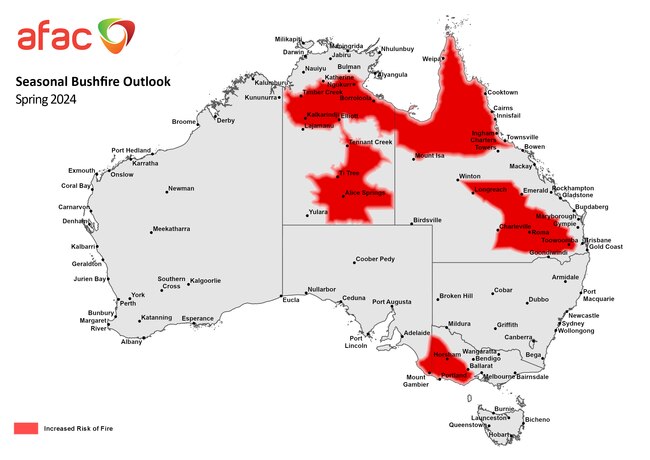
“That is particularly likely for the northern part of the country and Tasmania. For those same regions, there is also a higher likelihood this spring of unusually warm days – those extreme heat days,” Ms Donnelly said.
While some areas were forecast for only a normal risk of fire, AFAC chief executive Rob Webb said deadly and destructive fires could still occur and urged communities to prepare and adhere to advice of local fire authorities.
“Fire and emergency services are prepared for the fire season ahead and are here today to encourage communities to do the same. Understand your local risk, know where you will get your information,” Mr Webb said.
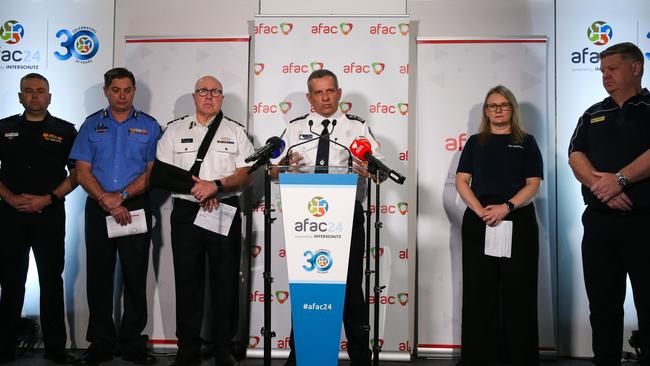
The country’s fire agencies and industry leaders are gathering in Sydney for the APAC 2024 Conference and Exhibition, where in addition to surveying the latest equipment they will plan for the bushfire season ahead.
Find each state and territories’ outlook this fire season below.
NSW
Wet weather has significantly hampered hazard reduction burning in NSW ahead of the spring and the summer fire season.
NSW RFS commissioner Rob Rogers said hazard reduction burns were “way behind” and only 47 per cent of their target.
Despite the bushfire outlook being relatively normal, Mr Rogers urged the state’s residents not to get complacent.
“Over the past few days we have had strong winds and warmer conditions where we have had fires overnight,” he said.
“In fact, there are 50 fires burning as we speak at the moment – so it’s no time for complacency.
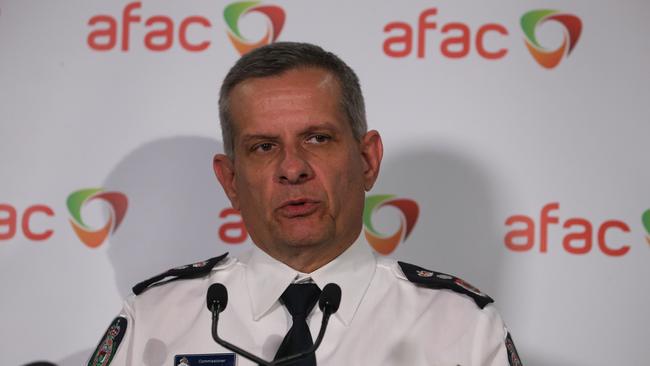
“Fire risks are real. It only takes a couple of warm days, strong winds, and we have fires start threatening properties.
“This is what we saw in Port Stephen in recent days, so please be vigilant.”
Victoria
Parts of Victoria are being warned to brace for an increased fire risk over coming months after the warmest winter on record.
Emergency Management Victoria commissioner Rick Nugent said warm temperatures were expected to continue into spring.
Areas of the state’s far west and southwest were most at risk, including Wimmera and the Grampians.
“Dry vegetation in these areas will be highly flammable which will make it easier for fires to start and spread,” Mr Nugent said.
“Other areas with drier forests, woodlands and grasslands could also see an earlier start to the bushfire season of Victoria.”
Mr Nugent said the state’s emergency services, including Country Fire Authority and Fire and Rescue Victoria, were ready.
Queensland
Unlike other states, firefighters in Queensland warned that this year’s fire season was “well and truly upon” them.
Forecasting for the state indicated that early spring would bring the risk of grass fires, many of which had already broken out.
Nonetheless, QFD Commissioner Steve Smith said the state’s emergency services were ready and prepared for the task.
He said a wet summer this year had given rise to ideal conditions for growth in parts of the state, raising new fire risks.
“We’ve got significant vegetation growth that has cured with a drier-than-average winter,” Mr Smith said.
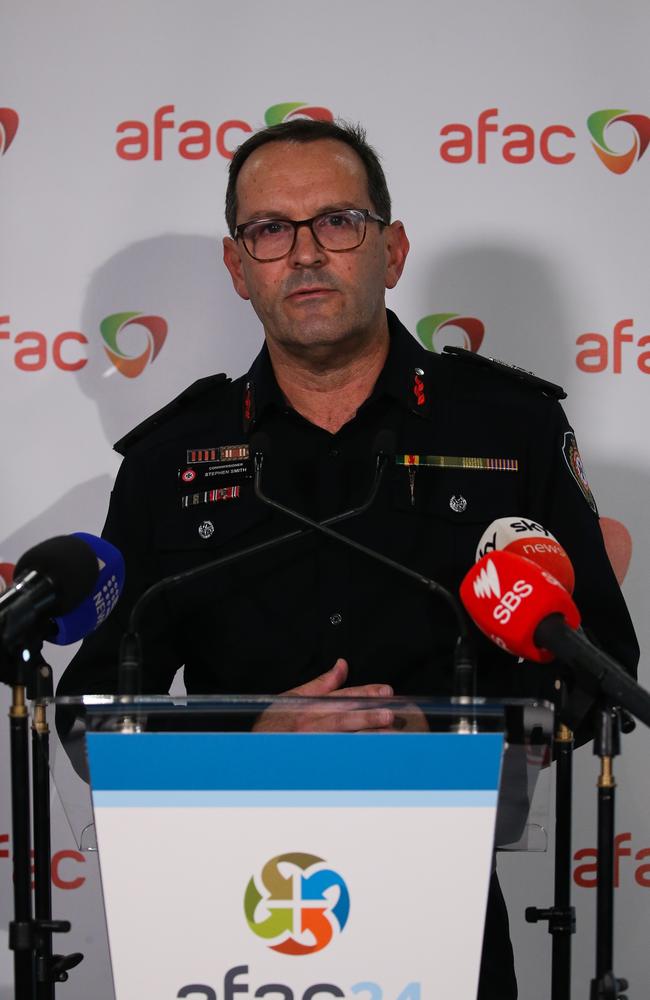
“With some of those frost curing our fuels, this is elevated fire risk, particularly across northern, central and southern Queensland.”
Of particular concern were southern and central grasslands and forests, particularly around the Scenic Rim area.
Areas to the west in Darling Downs as well as Charleville, up to Warrego and the Maranoa, were also of concern.
“There’s also heightened conditions risk for the Sunshine Coast hinterland,” Mr Smith said.
“Also, northern areas, from Townsville to Cape York and west to the NT border, including the Gulf Savannah country.
“Elevated fire conditions are expected for the southern interior during spring driven largely by exposed grass, cropping land.”
Western Australia
The country’s west is forecast for “potentially average fire potential” during spring this year.
DFES commissioner Darren Klemm said the state had “significant deficiencies” in rainfall in the first six months of 2024.
“An average winter has helped to top that up, but we are coming off an incredibly low base,” he said.
“We’ve forecast elevated temperatures over the spring period (so) the fuel is going to dry off reasonably quickly.”

Looking ahead at summer, Mr Klemm is anticipating “quite a challenging bushfire season in Western Australia”.
“Already, the bushfire season has started in the north of Western Australia,” he said.
“In the Kimberley and we are currently dealing with fires in that area.
“Over the next couple of months, during spring, you’ll see those fires push down in the Pilbara as the temperatures increase.”
South Australia
A drier than average autumn has driven an even drier winter in South Australia, raising the risks of bushfires this spring.
CFS chief officer Brett Loughlin said if there was not meaningful rain in spring, SA faced a potentially challenging fire season.
“Areas where we have some concern include the lower southeast, especially in areas along our border with Victoria,” he said.
The far west of South Australia as well as the midwest were also of concern to the state’s fire authorities.
Mr Loughlin urged residents to use “improving weather” to prepare their properties for the spring and summer seasons ahead.
“It will only take a few warm and windy days to see that risk realised across our state,” Mr Loughlin said.
Tasmania
While winter had delivered cold days, the island state was warned to brace for higher daytime and overnight temperatures.
TFS deputy chief officer Matt Lowe said the recent rain event had “reset the moisture zones across our state”.
“But that would just give us time before the drying occurs later at the end of the year,” he said.
Mr Lowe noted resources provided by the federal government, namely aerial units, would assist in the summer season.
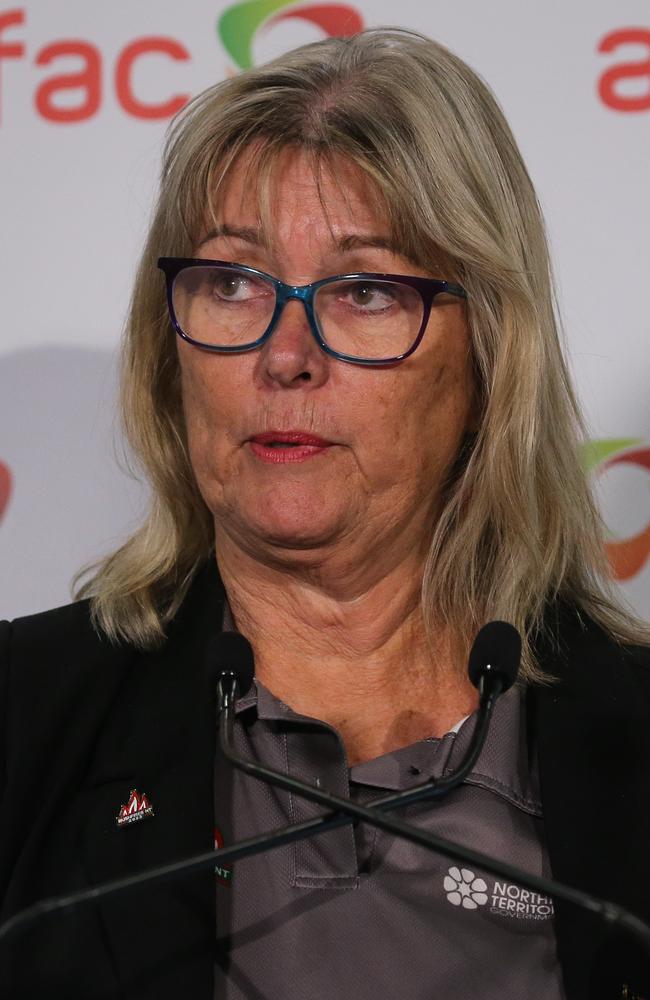
Northern Territory
The Northern Territory is bracing for increased fire risk, specifically around Alice Springs, Barkly and Savannah regions.
Bushfires NT executive director Collene Bremner said the territory was already in a “fire danger period”.
“A fire ban is already in place for Darwin and Adelaide River, across central Barkly and Central Australia,” she said.
“The vegetation is drying quickly (and) we’ve already seen fires around Alice Springs.
“We have a fire just north of Barkly that has been going for over a week.”
Landholders are urged to be prepared and to make sure fire breaks are installed.
ACT
The nation’s capital is forecast for an average spring this year following a dry winter.
ACT RFS chief officer Rohan Scott said the territory’s soil and “heavy fuels” nonetheless had “good moisture content”.
“We are asking people to be prepared as we enter the summer period,” Mr Scott said.
“If we do get above-average temperatures and above-average rain we could see an increase in grass growth.
“Our greatest threat this year will be from grass fires impacting urban interface in the ACT.”

Mr Scott said firefighters would be conducting hazard reduction burns and other risk mitigation before summer.
The AFAC’s regional outlook is developed in conjunction with a range of agencies, including state and territory emergency services and governments, environmental advocacy groups, and the Bureau of Meteorology.
It warned the drying out of grasslands in central and southern Queensland caused by winter frosts and dry winds had increased fire risks this spring, while unseasonal rains in Queensland and the Northern Territory had increased fuel loads.
Further south, the AFAC warned that large parts of southeastern South Australia and Western Australia, as well as parts of Tasmania, received rainfall in the lowest 10 per cent on record over the first half of the year.
Land managers and fire agencies have taken advantage of favourable conditions today to undertake several hazard reduction burns around the state, including the Woods Creek HR in the Grose Vale/Grose Wold area. For more information on HR burns, visit: https://t.co/XrE2qbbZzPpic.twitter.com/63fX19iz6h
— NSW RFS (@NSWRFS) September 3, 2024
Conversely, southwestern WA and western Tasmania received well above-average rainfall, easing conditions there, while Victoria, SA and Tasmania were warned of a potential early start to the fire season if dry weather persists.
NSW firefighters are bringing under control an out-of-control bushfire at Old Punt Rd north of Newcastle that has so far burned through more than 230ha of bushland only a few hours from the outskirts of Sydney.
Emergency services deployed thermal cameras on Wednesday to identify hotspots to be “mopped up and blacked out”, while crews continued to work to strengthen containment lines on the fireground.
At least 40 bushfires and grass fires were burning across NSW as of Wednesday morning.
Originally published as ‘Increased risk’ of bushfires this spring after record warm August


